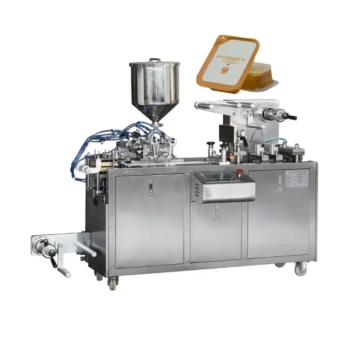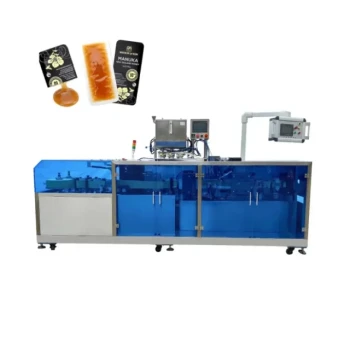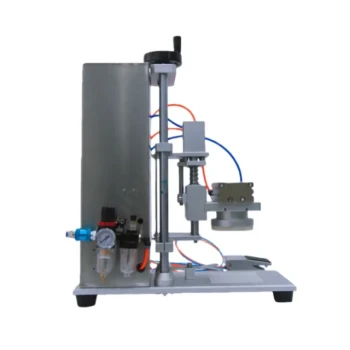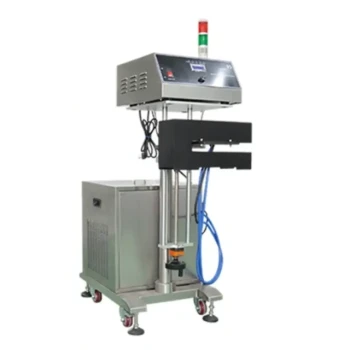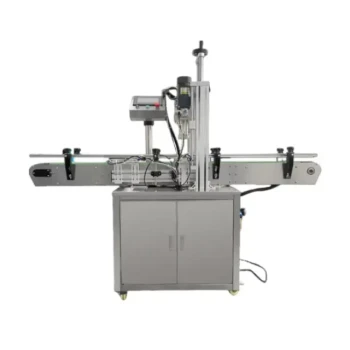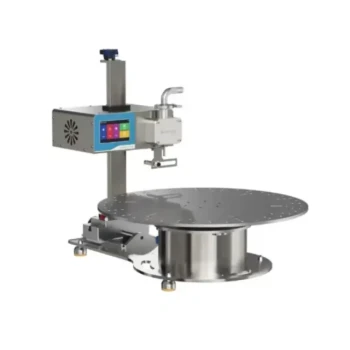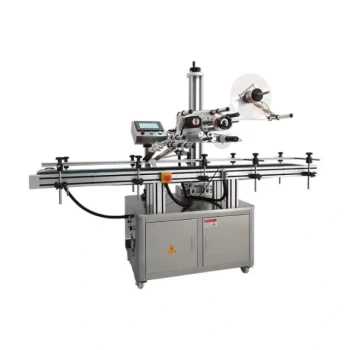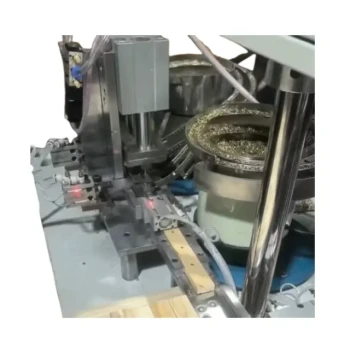At its core, the stick pack packaging process for honey is an automated sequence where a roll of packaging film is formed into a tube, filled with honey, then sealed and cut into individual, ready-to-use sticks. This method transforms bulk honey into convenient, single-serving portions with precision and efficiency.
The key takeaway is that the most common method for honey stick packaging uses an intermittent-motion machine. This "stop-and-go" process prioritizes high precision and flexibility over raw speed, making it an ideal and affordable solution for many producers.

The Step-by-Step Mechanical Process
The entire operation is handled by a single, integrated machine that executes a precise cycle of forming, filling, and sealing.
Step 1: Film Forming
The process begins with a large roll of flat packaging film, which is fed from a roller into the machine. This film is then expertly folded and sealed along one edge to create a continuous, hollow tube, which will become the body of the sticks.
Step 2: Honey Filling
Once the tube is formed, a specialized pump injects a precise, pre-measured amount of honey into it. This step is critical for ensuring product consistency and minimizing waste.
Step 3: Sealing and Cutting
After the honey is dispensed, the machine simultaneously creates a top seal for the filled portion and a bottom seal for the next stick. A cutting mechanism then separates the completed, filled-and-sealed stick from the continuous tube. This cycle repeats rapidly.
The Heart of the Operation: Intermittent-Motion Machines
The specific type of machinery often used for honey stick packs operates on an intermittent-motion principle. Understanding this concept is key to understanding the entire process.
What "Intermittent-Motion" Means
This describes a "stop-and-go" operational cycle. The packaging film pauses momentarily for each distinct phase: forming, filling, and sealing. It is not a continuous, fluid motion.
The Advantage of Precision
The brief pause between cycles allows for extremely high precision. This ensures each stick is filled with the correct amount of honey and that the seals are strong and reliable, which is crucial for a viscous product like honey.
The Benefit of Flexibility
Intermittent-motion machines are known for their versatility. They can often be reconfigured for different stick sizes or product types with relatively easy changeovers, offering producers significant operational flexibility.
Understanding the Trade-offs
While effective, this method involves a clear balance between different production priorities.
The Primary Limitation: Output Capacity
The stop-and-go nature of the process inherently limits its top speed. Compared to continuous-motion systems used for other products, the overall output of honey sticks per minute is lower.
The Key Advantage: Affordability and Footprint
The trade-off for lower speed is often a lower initial investment. These machines typically have a more compact configuration, making them more affordable and suitable for facilities with limited space.
Making the Right Choice for Your Goal
Selecting a packaging process depends entirely on your production scale and business strategy.
- If your primary focus is versatility and precision for a new or growing brand: The affordability and easy changeover of an intermittent-motion process is an excellent starting point.
- If your primary focus is maximizing output for a high-volume, single-product line: The slower speed might become a bottleneck, and a higher-capacity system may eventually be necessary.
This process provides a highly reliable and cost-effective method for bringing single-serving honey products to market.
Summary Table:
| Process Step | Key Action | Machine Function |
|---|---|---|
| 1. Film Forming | Flat film is folded & sealed | Creates a continuous tube |
| 2. Honey Filling | Precise amount of honey is injected | Specialized pump ensures accuracy |
| 3. Sealing & Cutting | Top/bottom seals are made & stick is cut | Completes the individual stick pack |
| Machine Type | Intermittent-Motion | Advantages |
| Operation Cycle | Stop-and-go | High precision, strong seals |
| Flexibility | Easy changeover for different sizes | Ideal for varied product lines |
| Trade-offs | Lower speed vs. continuous motion | More affordable, compact footprint |
Ready to streamline your honey packaging?
HONESTBEE supplies commercial apiaries and beekeeping equipment distributors with reliable, wholesale-focused stick pack machinery and supplies. Our intermittent-motion systems offer the precision and flexibility you need to produce consistent, single-serve honey sticks efficiently.
Contact us today to discuss how our solutions can enhance your production line and grow your brand!
Visual Guide
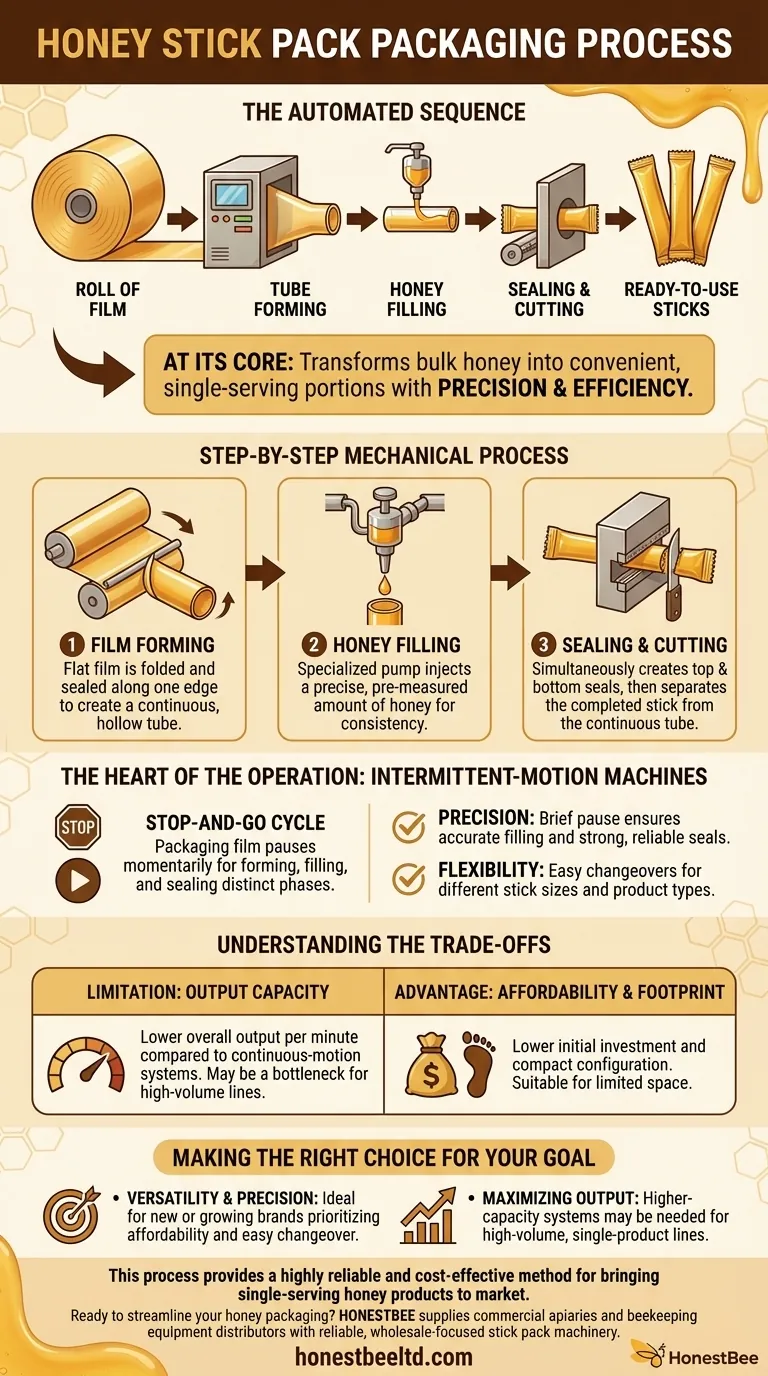
Related Products
- Pneumatic Paste Filling Machine Bottling Packaging Machine Single Nozzle
- Professional Durable Customizable Blister Packing Machine
- Double Nozzle Small Honey Filling Machine Honey Sachet Packing Packaging Equipment
- Fully Automatic Honey Filling Packaging Machine for Processing Line
- Automatic Single-Dose Snap & Squeeze Honey Sachets Packing Machine
People Also Ask
- What factors should be considered when choosing a honey packaging machine? Optimize Your Production Line
- What features do honey stick filling machines offer? Automate Production for Perfect Sticks
- What features make jar or bottle packing machines suitable for honey packaging? Optimize for Viscosity and Purity
- How does a VFFS liquid packaging machine handle honey packaging? Master Viscous Liquid Filling
- What are the initial steps to consider when starting a honey processing plant? Build a Resilient Foundation

